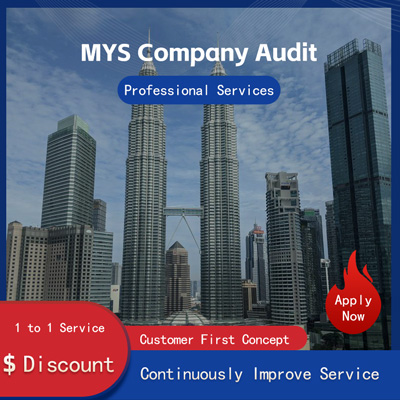
What Are the Charging Standards for Last-Mile Delivery Fees?
What Are the Standards for Last-Mile Delivery Fees?
In today's rapidly developing e-commerce and logistics industries, last-mile delivery, as a crucial part of the entire logistics chain, has gradually become a topic of common concern for both consumers and merchants. Last-mile delivery refers to the final stage when goods are transported from distribution centers or warehouses to the ultimate delivery address, directly impacting the consumer shopping experience. Understanding the standards for last-mile delivery fees is particularly important.
Recently, several e-commerce platforms have adjusted their last-mile delivery services, attracting significant attention. For example, a well-known e-commerce platform announced that starting this year, it will charge additional delivery fees for some orders in remote areas. This move is mainly aimed at balancing logistics costs with service quality. The relevant responsible person of the platform mentioned in an interview we hope to make the fee structure more transparent so that customers clearly understand any possible extra expenses during the delivery process. This indicates that the formulation of last-mile delivery fees not only concerns the operational efficiency of enterprises but also needs to take into account user psychological expectations.
Besides remote areas, the cost of last-mile delivery within cities also shows diverse trends. Some large city courier companies have begun to adopt distance-based charging methods, determining the fee level based on the actual distance from the delivery origin to the destination. While this approach seems reasonable, it has encountered many controversies in practice. Some consumers have reported that within the same area, due to complex terrain or different traffic conditions, the actual delivery fees often vary significantly. In response, industry insiders pointed out that a reasonable pricing mechanism should be based on scientific calculations and ensure fairness and impartiality.
It is worth noting that with the increasing popularity of new energy vehicles and the advancement of environmental policies, green logistics has become a new direction for industry development. Under this background, some companies are trying to reduce last-mile delivery costs by optimizing route planning and reducing empty load rates, thereby alleviating the burden on consumers. For instance, a logistics company recently launched a shared delivery plan, encouraging multiple merchants to jointly use the same delivery team for cargo transportation tasks. According to statistics from the company, after implementing this plan, the average cost per delivery dropped by about 15%, and waiting times were also shortened.
Technological advancements also provide technical support for standardizing last-mile delivery fees. In recent years, big data analysis and artificial intelligence technologies have been widely applied in the logistics sector, making the selection of delivery routes more precise and efficient. For example, using algorithms to predict peak demand can effectively avoid delays caused by congestion during peak hours; while the introduction of intelligent sorting systems has greatly improved package handling speed and reduced labor costs. These innovative measures undoubtedly lay a solid foundation for building a unified last-mile delivery fee system.
Of course, any fee behavior must comply with legal requirements. According to China's Price Law, operators should follow the principle of openness and transparency when setting prices for goods and services and must not abuse their market dominance to force trading partners to accept unreasonable terms. This means that both e-commerce platforms and third-party logistics enterprises need to strictly adhere to relevant regulations when setting last-mile delivery fee standards and must not arbitrarily raise prices.
In summary, the standards for last-mile delivery fees are influenced by various factors, including geographical location, transportation distance, environmental policies, and technological innovation. In the future, with intensified market competition and technological progress, it is believed that last-mile delivery fees will develop towards greater rationalization and transparency. At the same time, relevant regulatory authorities also need to strengthen market supervision to protect consumers' legitimate rights and interests. Only in this way can the sustainable and healthy development of the logistics industry truly be achieved.

Still have questions after reading this? 26,800+ users have contacted us. Please fill in and submit the following information to get support.

Service Scope
MoreRecommended for You
- Shopee 3PF Final Mile Delivery Fee Details
- Who Bears the Cost of Last-Mile Delivery?
- Why Distinguish Hekka From Kapa?
- USPS Final-Mile Service Allocation Account Type
- Why Don't Bees Use Less-Than-Truckload Shipping?
- Function and Role of Less-Than-Truckload LTL Transportation
- LTL Shipping What Kinds of Goods Can Be Transported?
- Difference Between Walmart WFS LTL and TL Transportation
- How to Define Less-Than-Truckload LTL Shipping?
- How to Choose the Right Last-Mile Logistics Channel
- End Delivery Service Company in the U.S.
- LTL Line-Haul Transportation Cost Explained
- Practical Situations of Less-Than-Truckload Transportation
- Analysis on Price Trend of Less-Than-Truckload and Full Truckload Transportation
- Which LTL Company Has Better Reputation?
- Which Method Is Faster, Maersk UPS or Cab parcel?
- Freight Transportation Charge Standard for Less-Than-Truckload Goods of Automobile
- Logistics Methods Commonly Used in European Last-Mile Delivery?
- Difference Between CAP'e and Hi-CAP
- Notice of Suspension of CAR Service in the U.S.


 ONE
ONE









Customer Reviews
Small *** Table
December 12, 2024The experience was very good. I was still struggling to compare it with other companies. I went to the site a few days ago and wanted to implement it as soon as possible. I didn't expect that everything exceeded my expectations. The company is very large, with several hundred square meters. The employees are also dedicated and responsible. There is also a wall of certificates. I placed an order on the spot. It turned out that I did not make a wrong choice. The company's service attitude is very good and professional. The person who contacted me explained various things in detail in advance. After placing the order, the follow-up was also very timely, and they took the initiative to report the progress to me. In short, I am very satisfied and recommend this company!
Lin *** e
December 18, 2024When I first consulted customer service, they recommended an agent to me. They were very professional and patient and provided excellent service. They answered my questions as they came in. This 2-to-1 service model is very thoughtful. I had a lot of questions that I didn’t understand, and it’s not easy to register a company in Hong Kong. Fortunately, I have you.
t *** 7
December 19, 2024I originally thought that they only did mainland business, but I didn’t expect that they had been doing Hong Kong business and were doing very well. After the on-site interview, I decided to ask them to arrange the registration of my Hong Kong company. They helped me complete it very quickly and provided all the necessary information. The efficiency was awesome. It turns out that professional things should be done by professionals.👍
b *** 5
December 16, 2024In order to register a company in Hong Kong, I compared many platforms and stores and finally chose this store. The merchant said that they have been operating offline for more than 10 years and are indeed an old team of corporate services. The efficiency is first-class, and the customer service is also very professional.